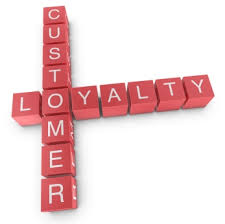
For many of us across the U.S., we've been experiencing weather that is hot, hot hot. Here in the Greater NYC area, it feels like we've been in a perpetual heat wave, with temps hitting well into the upper 90′s, low 100′s for the last couple of weeks.
The heat doesn't just have a physical effect on us, but it has a definite effect on your business. It's a common occurrence to experience power outages during heat waves, as demand goes through the roof, and this affects your business.
We've asked Larry Lang, CEO of Quorum - a one-click backup, recovery and continuity service provider that helps businesses safeguard their revenue, customers and reputation - to share with us ways that we can protect our businesses during summer heat waves and ensure our IT infrastructures are not compromised. Enjoy his article and tips on keeping your business protected.

Don't Let Summer Heat Waves Fry Your Small Business. Top 3 Tips For Protecting Your IT Infrastructure!
By Larry Lang, CEO of Quorum
Over the past several weeks, many cities across the U.S. have been hit with triple-digit temperatures. And with extreme heat (and humidity) comes extreme risk for small businesses. Blackouts and power outages occur when extensive use of air conditioning puts a strain on the power grids.
According to the National Archives and Records Administration, 93 percent of all businesses that lost their data center for 10 days went bankrupt within one year. So, with the dreaded heatwave and subsequent threat of downtime, how can small businesses protect their IT assets?
While we cannot prevent heat waves or natural disasters, we can stem or even circumvent their damage. How? The answer goes beyond backup generators and having a few battery-operated radios, extra batteries and flashlights on hand. Rather, disaster recovery planning and technology that enables instant recovery of data, application and systems — along with frequent system testing — is the only way to protect small businesses.
Following are some tips you can consider now to prepare in advance for whatever downtime troubles a heatwave may cause:
- Always Be Testing: Testing on a regular basis is crucial to business continuity, and it should be done frequently. However, many small and mid-sized business run into barriers that make frequent testing difficult or impossible. Ask yourself these questions: Does your vendor charge extra to test your disaster recovery system? How hard is it to test your recovery system? Some solutions take hours to spin up virtual machines. How long will it take to test yours?
- Business Continuity Is the Best Recovery: Any business can implement a backup solution that covers every device and machine used, but being able to recover that data quickly should the system go down is the real test. Building an always-on IT environment in a virtualized computing world isn't rocket science, but it does require the ability to make the right choices. Unlike in fashion, vintage accoutrements like tape don't look very good when it comes to disaster recovery. You also have to do your due diligence to ensure that the tools that are more attractive — cloud and appliance solutions — don't come with a built-in Pandora's Box effect. As Alexander Graham Bell said, "Preparation is the key to success," and nowhere is this more true than in disaster recovery and business continuity.
- Devil's in the Detail: Any recovery solution should be effective when faced with a major disaster like a hurricane. But it should be just as effective if a power strip fails. Having a system that cannot handle a minor setback is just as troublesome as one that cannot recover from a major catastrophe. For a small to mid-sized business, it's imperative to know what types of natural disasters can occur in the area and ensure the right backup solution is in place to handle them. Just as important is knowing what errors could occur in technical systems — whether a power outage or hard-drive failure. Do a back-of-napkin calculation on how long your vendor will take to recover your systems. Does your vendor need time to manually rebuild recovery nodes during the recovery process? Can you have an unlimited number of recovery nodes running at one time? If not, you may experience processing delays during the recovery process. Can the recovery nodes run inside the same appliance? Some vendors export recovery nodes from spare servers — and charge you for it. Ask for a recovery scenario demo to clarify everything.

 Recent Colloquy research found that there are
Recent Colloquy research found that there are  Belly
Belly

 When running or working in a small business, very early on you'll learn (occasionally the hard way!) that communication is tantamount to productivity. If you can't communicate with clients, partners, or suppliers, your business is basically in a stasis that can't produce much. I work at a business that often needs to make calls every day, to raise funds, set meetings and forward information. However, I also work in the historic district and my building was made in 1859, which has resulted in less than perfect conditions for maintaining solid communicate with our internet / cellular services.
When running or working in a small business, very early on you'll learn (occasionally the hard way!) that communication is tantamount to productivity. If you can't communicate with clients, partners, or suppliers, your business is basically in a stasis that can't produce much. I work at a business that often needs to make calls every day, to raise funds, set meetings and forward information. However, I also work in the historic district and my building was made in 1859, which has resulted in less than perfect conditions for maintaining solid communicate with our internet / cellular services. 




